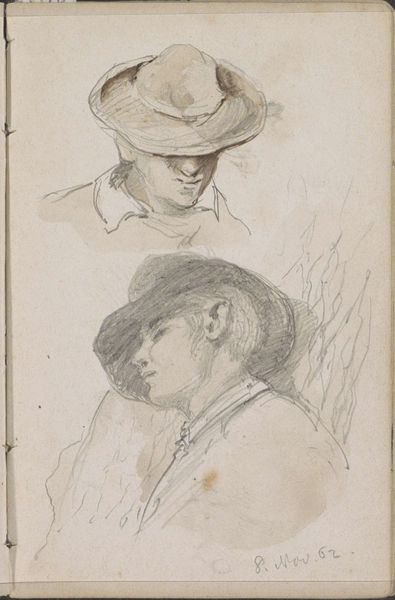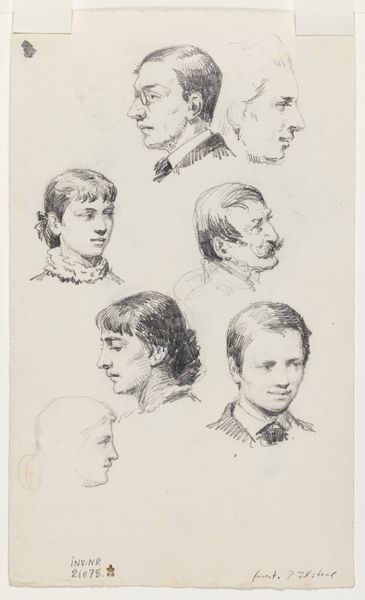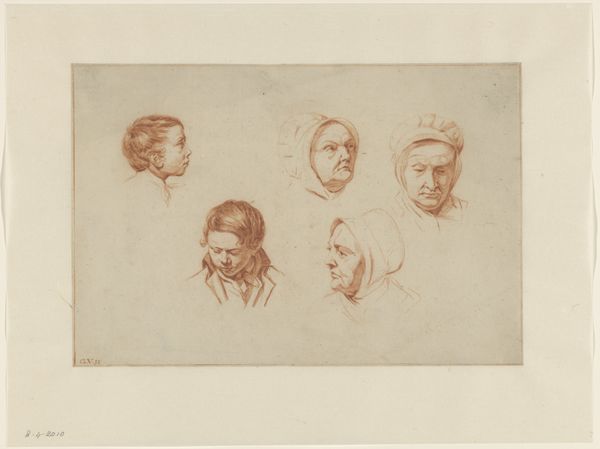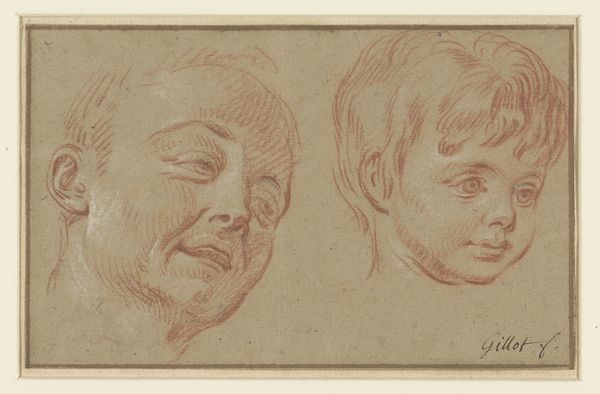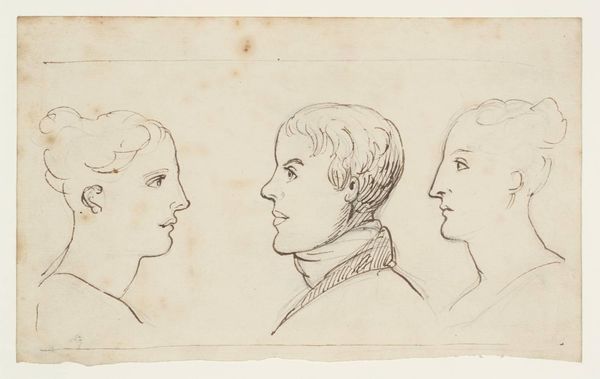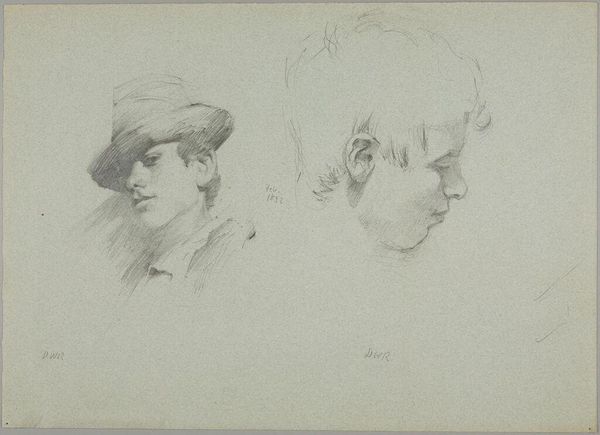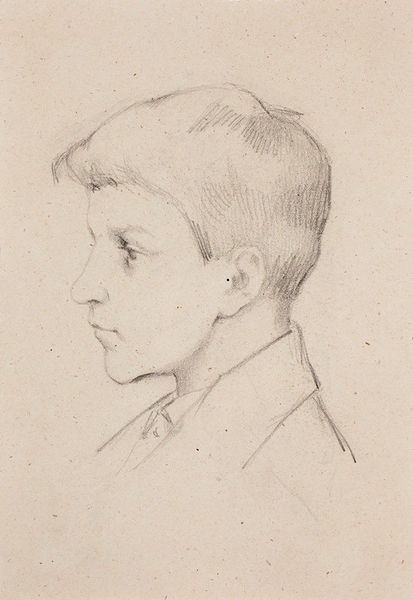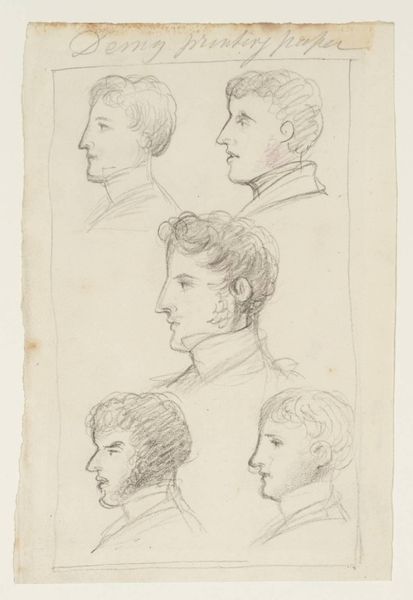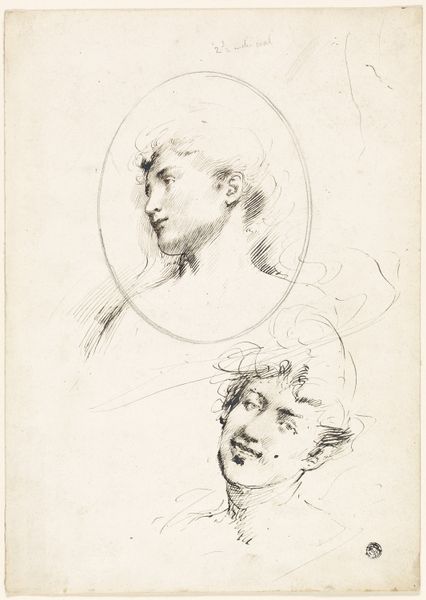
drawing, paper, dry-media, pencil, charcoal
#
portrait
#
drawing
#
charcoal drawing
#
paper
#
dry-media
#
pencil drawing
#
romanticism
#
pencil
#
portrait drawing
#
charcoal
#
academic-art
Dimensions: height 161 mm, width 171 mm
Copyright: Rijks Museum: Open Domain
Editor: This is "Studies van twee mannen- en een vrouwenhoofd" by Christiaan Portman, made in 1828 using pencil and charcoal on paper. The delicate strokes give it a sense of intimacy, almost like sneaking a peek into a private sketchbook. What's your interpretation of the context behind a work like this? Curator: Well, let's consider this through the lens of art academies. These 'study sheets' were a crucial component of artistic training. Notice how the subjects are not idealized figures. It’s a document of academic practice aimed at mastering human anatomy. The drawing, rather than aspiring to high art, served the mundane but necessary purpose of artistic training. Do you see any of the conventional portraiture conventions that were being publicly exhibited? Editor: Not really, beyond maybe the likenesses themselves. These feel so informal compared to the grand portraits you see hung in museums. So this wasn’t intended for display. Is that a reflection of its historical value? Curator: Precisely. Works like this illuminate the often-unseen labour that goes into art production. It exposes the sausage-making process, if you will. They weren't necessarily "valuable" in a monetary sense back then, but now they offer valuable insight into artistic education and the social function of art training in that era. The drawing speaks more to pedagogy. Who got to access the education, and what status it conferred. Who was being excluded? That is more central than the “beauty” of the portraiture. Editor: That makes me think about how even today, art education faces accessibility challenges. I hadn't really considered how historical these issues are. Curator: Exactly! By examining these educational practices through art objects like these portraits, we expose underlying inequalities within the art world, past and present. This can prompt critical conversations about who gets to participate in art, and what qualifies as 'art' in the first place. Editor: I like the idea that an object that’s a practice and training becomes something socially insightful when exhibited later in a museum setting. Curator: Museums change objects and how they are understood through exhibit context, that's how cultural understanding is expanded.
Comments
No comments
Be the first to comment and join the conversation on the ultimate creative platform.
